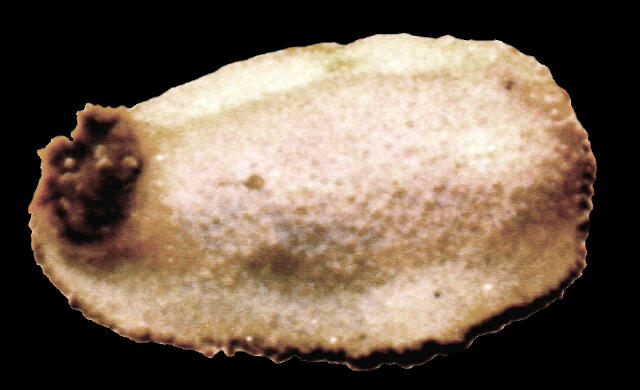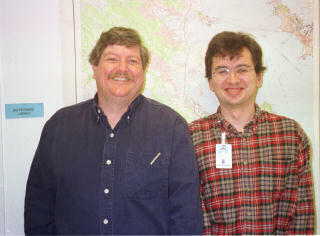 |
Goslineria callosa
Goslineria callosa Valdés, 2001
Since the early eighties, the Muséum National d'Historie Naturelle of Paris has been conducting an intensive collecting effort of deep water mollusks in the southwest Pacific. Several new species of nudibranchs have described from the material collected, including members of the genera Phyllidia, Phyllidiopsis, Halgerda (by Shireen Fahey), Cadlina, Austrodoris, Geitodoris, Discodoris, Peltodoris, Paradoris, Diaulula, Rostanga, Sclerodoris, Baptodoris and Dendrodoris. Additionally, two new genera of dorid nudibranchs have been described.
This week I would like to write about one of this new genera, Goslineria, named after my former supervisor and best friend Terry Gosliner. The main features of this new genus is the presence of six flexible copulatory spines in the reproductive system, each one inside of a copulatory gland. The presence of copulatory spines is no unusual in dorid nudibranchs, but no other genus has such a large number of them. Also, in other genera the spines are always hard, not flexible. Otherwise, the only known species of this genus, Goslineria callosa, is kind of a boring, whitish animal.
I would like to point out that the ugly external appearance of Goslineria, or the presence of the nasty copulatory spines, has nothing to do with the selection of the generic name (this is the official version). Actually, I just wanted to honor Terry with such an extraordinary and unique animal, and thank him for several years of support, advice and friendship. The specific name callosa (hard skin) refers to the hard texture of the mantle of this species.
Los Angeles, Calif
Dec. 2001
Valdés, A. (2001). Deep-sea cryptobranch dorid nudibranchs (Mollusca, Opisthobranchia) from the tropical west Pacific, with descriptions of two new genera and eighteen new species. Malacologia, 43: 237-311.
Taxomonic information and photo courtesy of Angel Valdes
Terry Gosliner and Angel Valdes at CAS circa 1998

The Museum of Natural History of Los Angeles holds the third largest collections of mollusks in the US, for the most part due to the impressive work of James McLean. The opisthobranch collection is relatively small but contains a number of types and historically important specimens from the Panamic region and California. Several opisthobranch workers have been associated to the museum in one way or another, and they left material in the collections. |
Now I have a number of new projects, some of which will involve shelled gastropods, but I will keep working with Terry and my other friends in the Bay Area. I am also hoping to work more closely with Hans Bertsch, Mike Miller and the other folks in southern California. California has the highest concentration of opisthobranchs workers, collectors, photographers and the only videographer (Alan Grant) in the world, but this had not a reflection in the local natural history museums. For the first time, the two largest museums in the western US will have opisthobranch curators. These are exciting times for all of us!
Send Angel e mail at avaldes@nhm.org
or visit his web page
